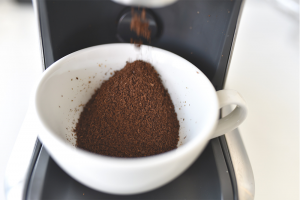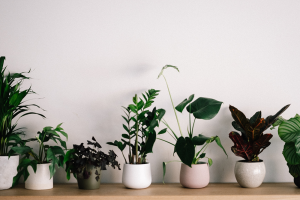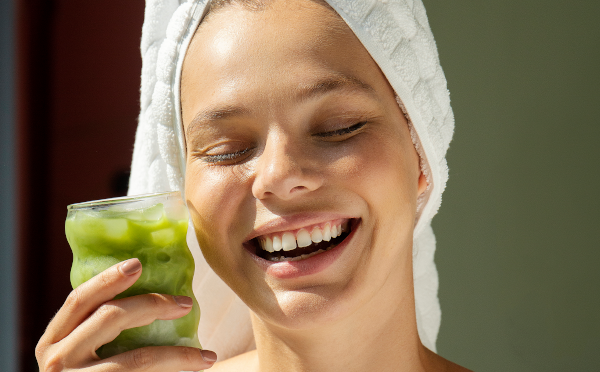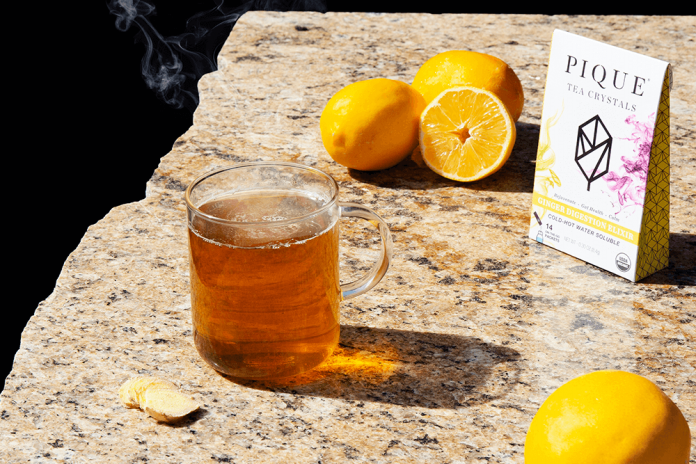What is the best natural air freshener?
If you’re like most people, you may fill your home with fresh scents from candles, essential oil or reed diffusers, or sachets of potpourri. You may even rely on natural cleaning products for freshening your kitchen and deodorizing bathroom smells.
Unfortunately, these room fresheners aren’t the healthiest choice despite their non-toxic claims or supposedly natural ingredients.
If you really want to make your house smell good naturally and safely, you’ve come to the right place.
We’re exploring five of the best all natural air fresheners in this guide. And each option is affordable, effective, and easy to DIY with a bit of know-how.
So let’s get into why this route is worth your time (and why ditching commercial home fragrances is a must):
The Dangers of Using Commercial Air Fresheners, According to Research
Even though your favorite kitchen or bathroom spray quickly fills the room with aromas of fresh air, wild orange, or clean laundry, you may be using harmful chemicals to cover up your home’s bad smells.
According to the latest scientific research:
Air fresheners on the market are loaded with volatile organic compounds (VOCs). Despite being “organic,” scientists keep finding more negative health effects the further they’re studied.
In one study, researchers learned VOCs can cause respiratory issues, lung dysfunction, and sensory irritation upon inhalation. They also create secondary pollutants, which can negatively affect your body’s natural hormone levels, the central nervous system, and both the cardiovascular and pulmonary systems [1].
Even worse news? That research showed it can take years for symptoms to surface, which is why many people don’t realize their air fresheners are causing harm until they start to feel unwell. Finally, it only takes a small amount of exposure to feel these adverse health effects [2].
Toxic VOCs are Hiding In Most Air Fresheners
The Consumer Product Safety Commission, which regulates cleaning supplies, air fresheners, and other home products, doesn’t require manufacturers to label what’s really in their products [4]. So it’s not uncommon to find VOCs hiding behind seemingly innocent words like “parfum” or “fragrance.”
These terms have become a blanket that allows manufacturers to hide an astronomical amount of toxic chemicals in their products, and we still don’t know the full extent of their dangers.
Though the list of products containing VOCs is enormous, these are some of the most common places they’re hiding [3]:
-
- Plug-in air fresheners
- Aerosol sprays
- Disinfectants
- Air fresheners
Some of the specific chemicals found in air fresheners include butylated hydroxytoluene (BHT), galaxolide, lilial, benzenemethanol, and musk ketone, which most people probably won’t recognize in their favorite scent [3].
When scientists in one study examined 25 products ranging from dish soaps and fabric softeners to disinfectants, soaps, and home fragrances, they learned [4]:
- At least 133 VOCs were emitted
- Each product emitted 17 VOCs, on average
- Roughly 1 to 8 VOCs that were emitted were considered highly toxic and a carcinogen (i.e., known to cause cancer)
- 44% of those products contained at least one of the 24 carcinogenic pollutants (such as acetaldehyde, dioxane, methylene, and formaldehyde)
These are all dangerous chemicals no one should be breathing.
But here’s the real kicker: many of these products were labeled as either “organic,” “green,” or “natural.” And they ranged in price from the low end of the spectrum all the way up to high-end brands, proving that even expensive options aren’t any better for you [4][5].
That’s why many researchers suggest avoiding store-bought air fresheners and using unscented alternatives or DIY natural fragrances instead [4][5].
How Can I Make My House Smell Good Naturally? Use These Natural Air Fresheners
Before we share our favorite DIY air freshener recipes, there’s something we need to clear up first: there’s no better option for your health and wellness than a clean home environment.
Your goal shouldn’t be to mask smelly bathroom odors or a dirty trash can. Ideally, you should address what’s causing the smell and then use these natural deodorizers and fresheners to keep unpleasant smells from lingering after you’ve dealt with the root of the problem.
For example, you don’t want to mask a mold or mildew smell only to find out that you’ve been growing either in your house for months. This might be just as harmful to your health as using toxic air fresheners.
So once you sleuth out what’s really going on, these are the best natural air fresheners to use moving forward:
Baking Soda: An Effective All-Around Odor Absorber
Baking soda is an affordable, versatile option for absorbing odors, which is why many people keep an open box inside their refrigerator.
You can add baking soda to a mason jar with a few drops of your favorite essential oils — tea tree oil, eucalyptus, peppermint, or lavender essential oil work well here. Sprinkle this mixture over your sink each night to deodorize your kitchen or dust some on your carpet before you vacuum to remove odors and leave a clean scent behind.
To make one of the best natural air freshener sprays, simply add a tablespoon of baking soda to a spray bottle with distilled water and a few drops of essential oils. Spritz your fabric surfaces and upholstery, such as couch cushions, your car’s interior, or your bathroom shower curtain and rug for a clean, odor-eliminating scent.
You can even spray this baking soda and essential oil air freshener directly into the air when you need a boost of aromatherapy after a smelly meal or bathroom experience.
White Vinegar: Best Natural Air Spray for Odor-Causing Bacteria
White vinegar can also get rid of lingering smells in your kitchen, bathroom, or car naturally. And it’s just as easy to use as baking soda (just don’t use them together!).
Simply add your white vinegar to a glass bottle and spray it on any surfaces that collect smells, such as your kitchen counter, trash can, or toilet bowl. You can even use it directly in the air as a natural room spray.
If you’re worried about the vinegar smell, don’t be. While it may smell strong at first, it quickly disappears along with odors. However, you could always add a cup of water or a few drops of lemon essential oil to lessen its strength if you’re especially sensitive to vinegar.
Baking soda and vinegar are the two best all natural air fresheners you can make and spray all over your house and car. But they’re not the only way to deodorize and impart fresh scents in your environment.
What Can I Use Instead of Air Fresheners?
If you’re sensitive to different scents or want to avoid strong smells in your home, you’ll love these three natural air fresheners:
1. Coffee Grounds
Don’t toss your coffee grounds after you’ve made your perfect brew! Save the grounds in a bowl and leave them on your kitchen counter to absorb and eliminate odors from cooking (such as garlic, oil, or fish).

2. Air-Purifying Houseplants
Adding indoor air-purifying houseplants is the best eco-friendly option on our list.
These low-maintenance plants effectively eliminate unwanted odors, add oxygen to your environment, and look aesthetically pleasing all year round:
-
- Snake Plants
- Spider Plants
- Broad Lady Palms
- Weeping Fig
- Chinese Evergreen
Having a vase full of fresh flowers (such as geranium, lavender, chamomile, or roses) can also make your home smell nice. Bonus: Once the flowers’ natural scents start to fade, you can dry the petals and add a few drops of your favorite essential oil to create a bowl of homemade potpourri.

3. A Simmer Pot With Whole-Food Ingredients
Have you ever noticed how good your house smells when something is simmering on the stovetop? Using a simmer pot is one of the oldest tricks in the book for how to make natural air freshener.
All you have to do is grab a pot, place it on the stove, and add a few cups of water. Then, simmer your favorite smells together on low for a few hours.
Choose whole cinnamon sticks, cloves, allspice, cranberries, orange rind, and rosemary for a warming holiday smell. Or throw in lemon, tangerine, and grapefruit along with mint leaves or thyme to create an invigorating, bright citrus scent. And vanilla extract, apple peels, and nutmeg will fill your home with freshly baked aromas.
Final Thoughts on Using Natural Air Fresheners
What is the best homemade air freshener? You now have five super easy options to create everything from bathroom air fresheners and toilet spray to car air fresheners and kitchen simmer pots.
Now that you know the dangers and harmful chemicals lurking in store-bought versions, you may be excited to make your own homemade air fresheners, especially since these air freshener recipes are effective, affordable, and healthier for you.
We can’t wait to see what lovely combinations you come up with!






